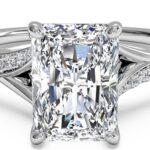Introduction:
In the context of literature or fiction, the sentence “the duke picked up something in the forest spoiler“. It can have a wide range of interpretations and meanings, depending on the context of the story. The genre, the author’s style, and other factors. Without more information about the specific story or context. It is difficult to provide a definitive explanation of what the sentence might mean.
However, based on some assumptions and generalizations, here are some possible explanations or interpretations of the sentence:
-
The Duke found an object:
The most straightforward interpretation of the sentence is that the Duke, a character in a story. Discovered or picked up something while wandering in the forest. This “something” could be an object such as a key, a book, a weapon, a piece of jewelry. Any other item that could be significant or relevant to the plot or the character’s arc. The nature of the object and the reason why the Duke picked it up could depend on the genre and theme of the story. For example, if the story is a mystery or a thriller. the duke picked up something in the forest spoiler explanation,
The object could be a clue or a vital piece of evidence. That would lead to a revelation or a plot twist later on. If the story is a romance or a drama, the object could be a token of love or a symbol of a past. A future event that would affect the Duke’s emotions or relationships.
-
The Duke encountered a creature:
Another possible interpretation of the sentence is that the Duke encountered or caught something alive in the forest. Such as an animal, a bird, a fish, or a reptile. Depending on the genre and tone of the story. The creature could be friendly or hostile, tame or wild, magical or mundane. The Duke’s decision to pick up the creature could reflect his personality, his beliefs, or his motives. For example, if the story is a fantasy or a myth. The creature could be a familiar or a guardian spirit. That would aid or challenge the Duke on his quest or mission. If the story is a satire or a comedy. The creature could be a hilarious or absurd creature that would add humor or irony to the scene.
-
The Duke had a vision or a memory:
A third interpretation of the sentence is that the Duke experienced or recalled something in the forest. That was not physically tangible but emotionally or mentally impactful. This could be a vision, a dream, a hallucination, a flashback, or a realization. The Duke’s action of picking up something could be symbolic or metaphorical. Indicating his attempt to grasp or understand the intangible or the abstract. The meaning and significance of the vision or memory could depend on the context and the themes of the story. For example, if the story is psychological. Literary fiction, the vision or memory could reveal the Duke’s inner conflicts, fears, or desires. If the story is a spiritual or a philosophical allegory. The vision or memory could represent a universal truth or a moral lesson.
-
The Duke faced a challenge or a danger:
A fourth interpretation of the sentence is that the Duke encountered or overcame a difficulty. A threat in the forest and the act of picking up something could signify his resilience, resourcefulness, or courage. The challenge or danger could be natural, such as a storm, a flood, a fire, or a landslide. It could be man-made, such as a trap, an ambush, sabotage, or a conspiracy. The Duke’s response to the challenge or danger could reveal his values, his skills, or his flaws, and could propel the plot or the conflict of the story. For example, if the story is an adventure or a survival tale, the challenge or danger could test the Duke’s physical and mental endurance, and the act of picking up something could be a small
Warning: Spoilers ahead for “The Duke and I” by Julia Quinn
In Julia Quinn’s “The Duke and I,” the duke, Simon Basset, goes for a walk in the forest and picks up a small twig. While this may seem like a small detail, it actually plays a significant role in the plot of the novel. In this essay, we will explore the symbolism behind the twig and what it represents for the characters in the story, the duke picked up something in the forest spoiler.
At the beginning of the novel:
At the beginning of the novel, Simon is portrayed as a cold and distant man who has sworn off marriage and children. He had a difficult childhood, growing up with a father who resented him for being born with a stutter and a mother who died when he was young. As a result, Simon developed a deep-seated hatred for his father and vowed never to marry or have children of his own. However, as the novel progresses, Simon meets and falls in love with Daphne Bridgerton, and their relationship begins to thaw his icy exterior.
When Simon first sees the twig:
The twig that Simon picks up in the forest represents the beginning of this transformation. When Simon first sees the twig, he is struck by its beauty. He notes that it is “perfectly straight and smooth, with a few small, delicate leaves at the end.” This description is significant because it reflects Simon’s growing appreciation for beauty and his ability to see beyond the surface level. He is no longer the cold and unfeeling man he was at the beginning of the novel; he is starting to see the world in a new way.
The potential for growth and change:
Furthermore, the twig also represents the potential for growth and change. When Simon picks up the twig, he notes that it is “not too big, but not too small either.” This balance is important because it suggests that Simon is ready for change, but he is not quite sure how to achieve it. The twig is a physical representation of this potential, and Simon carries it with him as a reminder that he is capable of growth and transformation.
Early experience with twig catching:
As Simon continues to carry the twig with him, he begins to open up to Daphne and share his past with her. He tells her about his difficult relationship with his father and his belief that he will never be able to have children. However, Daphne challenges Simon’s beliefs and helps him see that he is not doomed to repeat the mistakes of his past. Through their relationship, Simon begins to see that he is capable of love and that he can have a family of his own.
The connection between Simon and Daphne
The twig also represents the connection between Simon and Daphne. When Simon first shows Daphne the twig, she is touched by the gesture. She notes that it is “a lovely twig,” and Simon responds by saying, “I thought so too.” This exchange is significant because it shows that the twig has become a symbol of their relationship. It represents the beauty and potential for growth that exists between them. It also represents the beginning of their relationship, as it is the first time that Simon opens up to Daphne and shares something personal with her.
Serves as a plot device in the novel:
In addition to its symbolic meaning, the twig also serves as a plot device in the novel. After Simon picks up the twig, he puts it in his pocket and forgets about it. However, when he is later accused of compromising Daphne’s reputation, he uses the twig as evidence to clear his name. The twig becomes a tangible representation of their relationship, and its presence helps to dispel the rumors and lies that have been spread about them.
Conclusions:
In conclusion, the twig that the duke picked up something in the forest spoiler is a powerful symbol in “The Duke and I.” It represents the potential for growth and transformation, the beauty that exists beneath the surface, and the connection between Simon and Daphne. As the novel progresses, the twig becomes a tangible











